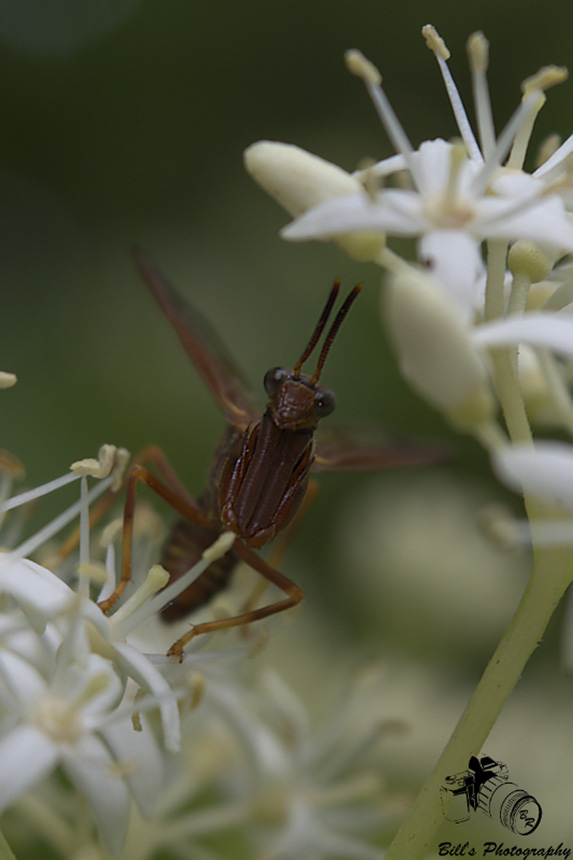
Brown wasp mantidfly (Climaciella brunnea) is a large wasp mimic. It occurs across the United States, in adjacent Canadian provinces, and in Mexico and Central America. It is widespread but considered scarce.
With its mantid-like front legs wasp mantidfly looks similar to a praying mantis but it is not even closely related. This is an example of convergent evolution, where unrelated organisms, adapting to similar environments, independently evolve similar characteristics. It also looks similar to a paper wasp. This is an example of Batesian mimicry, making it look like another species that is unpalatable or dangerous to potential predators.
Adults emerge in late May through October. Males live less than a week, females up to a month. They can be found on flowers where they wait on and ambush small insects. During her time the female lays up to several thousand eggs. The small white eggs have short stalks and are attached to the underside of plant leaves. After an egg hatches the larva waits for and then attaches itself to a passing wolf spider. When the female wolf spider begins making an egg sac, the mantid larva crawls off the spider and onto the sac. It then gets wrapped up as the egg sac is completed and feeds on the spider eggs inside.
http://www.minnesotaseasons.com/Insects/brown_wasp_mantidfly.html
